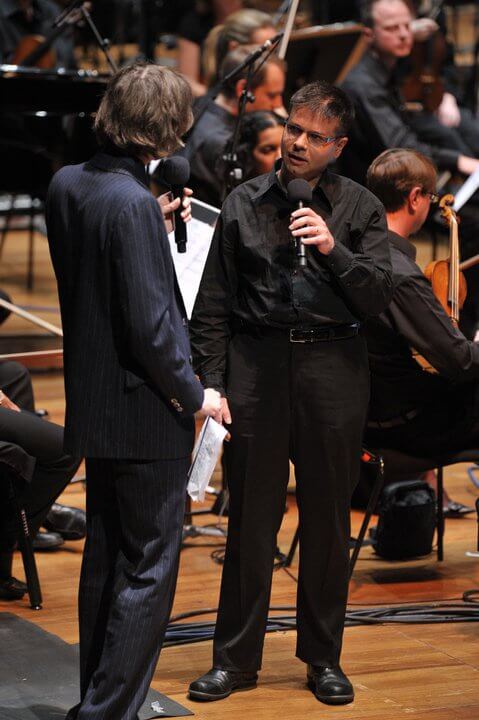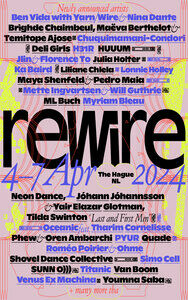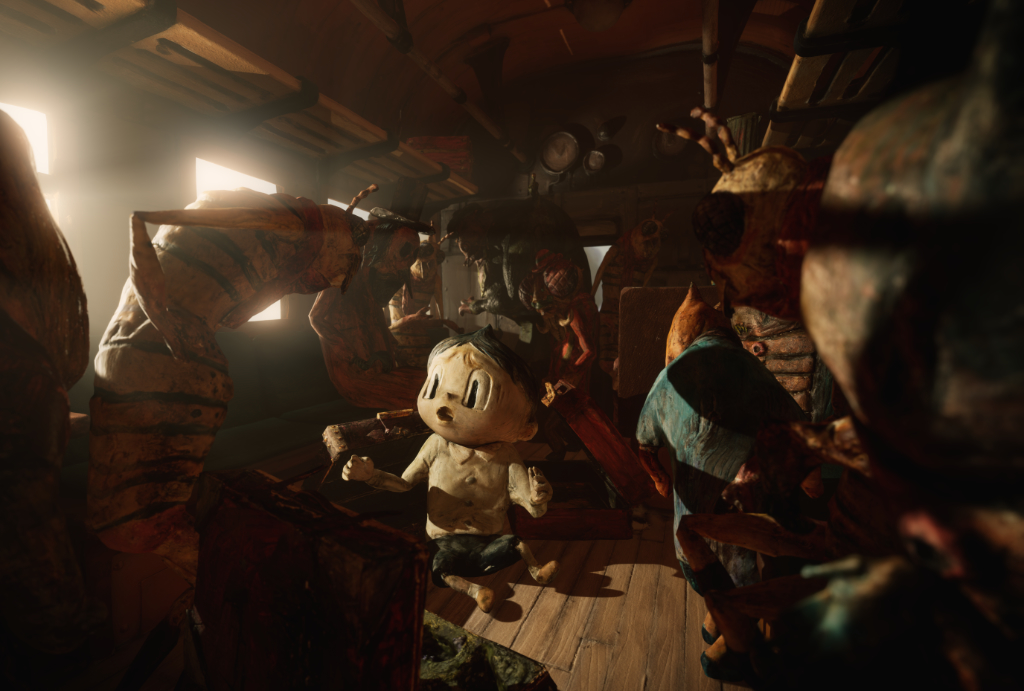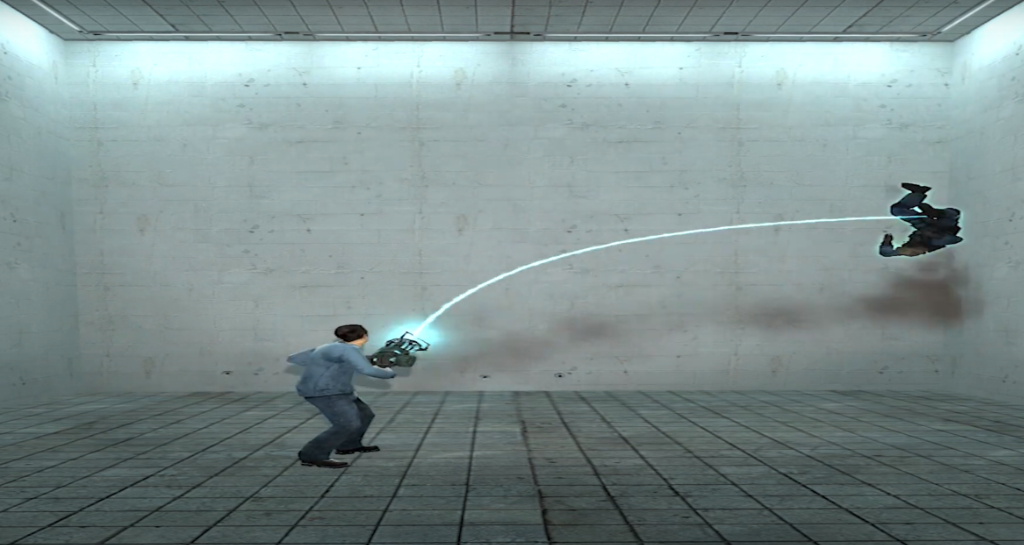Words by Meritxell Rosell
What do you imagine it is to be a composer working at the intersection of music, computing and biology? Professor Eduardo R. Miranda’s work takes us into the strange and fascinating realms of algorithmic composition, human-machine interfaces, artificial creativity, slime mould networks and neural cognition modelling; a long list of intellect challenging concepts and research topics, nonetheless harmoniously orchestrated in his brain.
Artificial Intelligence (AI) is a developing computer science technology that seems to have sneaked into our everyday lives, persistently appearing in daily news and mass media, particularly in the last year. Colloquially, “artificial intelligence” describes when a machine emulates processes that are associated with the human condition, such as learning and problem-solving. Advances in the field pose an unknown threat to humans.
AI confronts one of the longest-held scientific enigmas: the brain and how the pathways of cognition and intelligence are generated and interconnected. We still don’t completely comprehend how this fascinating organ works yet, artificially created “intelligent” structures are starting to elicit human extinction concerns from scientists of the calibre of Stephen Hawking.
But, thankfully, not everything around AI is tainted with a dark and sinister shadow. Professor Eduardo R. Miranda’s career has developed studying creativity, and, in his particular case, music composition-related creativity. Using concepts like AI, neural networks and human-machine interfaces he has dedicated his career to exploring creativity intricacies and “developing AI-based technology for music”.
Originally from Brazil, Eduardo is also the founder and head of the Interdisciplinary Centre for Computer Music Research (ICCMR) at Plymouth University where he has been shaping a research programme that tackles many of the central issues of AI research, namely: cognition, learning, speech evolution… Eduardo’s research aims at “gaining a better understanding of the impact of technology on creativity” and at the same time “looking into ways in which music mediated by technology may contribute to human development and well-being, in particular on health and disability”.
Eduardo has composed music for symphonic orchestras, chamber groups, solo instruments and electroacoustic music. But was his Biocomputer music project that caught our eye (and not only ours; his work has also been featured in renowned publications like The Guardian, BBC and The Wire).
An important emerging development in computing research is the narrowing of the coupling between silicon machines and biological systems, and Biocomputer music is a niche field that focuses on biological processes that inform and create musical compositions. The Biocomputer is an interactive musical computer based on living components (the slime mould Physarum polycephalum) cultured on a circuit board which produces electrical signals when performing their physiological functions.
With pieces like Biocomputer Music (2015) and Biocomputer Rhythms (2016), the composer explores the potential of the interactive musical biocomputer. Activating Memory is another example of Eduardo’s experimental compositions and part of his research towards developing technologies that will allow brain waves to replace keyboards and voice recognition instruments in a way that disabled people will be able to express themselves musically. Activating Memory is a composition for eight performers: a string quartet and a Brain-Computer Music Interface (BCMI) quartet.
The BCMI quartet consists of four persons wearing a brain cap with electrodes capable of reading information from their brains. Remarkably, a concert was held at the Royal Hospital for Neuro-disability in London (2015), where four severely motor-impaired patients teamed up with a string quartet to form the Paramusical Ensemble. This composition gave the motor-impaired patients and the professional ensemble an opportunity to make music together.
These are just some introductory examples of the work of the artist and researcher Eduardo R. Miranda, who is also the co-director of The Peninsula Arts Contemporary Music Festival alongside Simon Ible. As he points out, “music is something everyone can relate to, but our work has also shown that it can have amazing and positive impacts on those with the most severe of neurological conditions, as well as presenting their effects in new and innovative ways.

You define yourself as a composer at the crossroad of music and science. When and how did the fascination with biological systems come about?
As I have a background in Artificial Intelligence (AI), my fascination with biological systems began rather early on in my career. My research into gaining a better understanding of how the brain works is aimed at developing AI-based technology for music. But make no mistake I am not interested in using AI to replace human creativity. Rather, I am interested in building AI systems to be operated by human creators. For instance, in the 1990s, when I was studying towards my PhD in Scotland, I developed a sound synthesizer, named Chaosynth, on a parallel supercomputer at the Edinburgh Parallel Computing Centre. For Chaosynth I implemented a simulation of a network of thousands of neurons communicating electrical signals to each other and developed a method to sonify this simulation. Thanks to neuroscience-informed AI, I was able to turn the supercomputer into an unprecedented electronic musical instrument. More details about Chaosynth are available in my book Computer Sound Design: Synthesis Techniques and Programming (ISBN-13: 978-0240516936, Elsevier/Focal Press, 2002).
The biocomputer is an unconventional musical machine based on programmable organisms cultured on circuit boards, and which are capable of growing their own circuits. Biocomputer Music is an unprecedented composition for piano and the biocomputer, which is probably the first ever piece of music composed with an interactive system built with organic electronic components cultured in vitro. What challenges have you faced during the development of this fascinating project?
When I discovered that scientists were looking into harnessing a slime mould called Physarum polycephalum to solve problems (e.g., find the shortest path in a maze) that are routinely used to probe the ability of computational algorithms, I immediately had the blue-sky thinking of using this organism to build an intelligent, interactive and organic musical instrument. But I had absolutely no idea how this could ever be achieved. As I began to dig for more information I opened a Pandora’s box of mind-boggling ideas. However, it was disappointing to learn that the works reported in the research literature were incipient and above all rather theoretical. It looked as though nobody had actually implemented anything close to a practical controllable data processing machine using the slime. I realised that I would have to develop all from scratch. A daunting task!
Thanks to the inquisitive mind and tenacity of one of my post-graduate students, Edward Braund, we were able to develop some initial experiments as part of his Master’s degree project, which produced very encouraging results. With these on hand, I was able to obtain a university scholarship for Edward to study for a PhD in my lab. Then, we heard through the grapevine that some companies were developing an intriguing new electronic component behind closed doors, referred to as the memristor. And we found out that the slime mould has memristive properties. The rest is history.
However difficult the technical problems were to develop the research, I think the biggest challenge was – and still is – to not fall into the trap of building something that replicates the functionality of what exists already, but on another medium. If we were to build a new kind of musical computer, we had to aim for a novel machine that is able to do things that would be very tough, if not impossible, to program a conventional digital computer to do. Clearly, one of these things ought to be: being creative
Why Physarum polycephalum instead of another microorganism?
Physarum polycephalum is easily obtainable and user-friendly. It is not toxic and does not require expensive laboratory facilities to develop experiments with. This is a plus for a research centre like mine, which is based in an arts faculty. It would be inconsiderate to demand the department of music to hire a team of biologists and buy expensive biochemistry kit to the detriment of hiring musicologists and keeping the pianos tuned. Moreover, a fair number of scientists have been studying this intriguing organism, in particular in the field of Unconventional Computing. This makes it easy for non-specialists like me to piggyback on existing leading-edge research. But the most important reason, however, is that this slime mould is suitable for making the bio-memristors. The bio-memristor is the component at the core of our interactive musical biocomputer.
Your research interests developed at Plymouth University’s Interdisciplinary Centre for Computer Music Research are really extensive, ranging from Sound Synthesis and New Musical Interfaces to Artificial Intelligence and Music Neurotechnology. What is the topic that you are most interested at the moment and which one is the most difficult to put forward?
These are ticklish questions to answer. In my mind, these topics are facets of the same thing that fires up my mind, but which I have no good holistic term to describe. For instance, a great part of my research into “Music Neurotechnology” focuses on developing systems aimed at enabling severely physically impaired people to make music. Effectively, these systems are “New Musical Interfaces” for “Sound Synthesis”, most of which require “Artificial Intelligence” behind the scenes to work. Nevertheless, these labels are useful when it comes to addressing specific elements of the big picture, reporting to specific academic audiences, discussing the work at research conferences, and so on. But I would say that the most difficult to put forward has been “Music Neurotechnology” because my lab is a pioneer in this field.
New digital interfaces seem to blur the boundaries between the physical and the digital. How people respond to multiple stimuli in a digital environment beyond the touch of a screen or button is one of the questions to answer in this 21st century in which people live in a hyper-connected society. What impact do you predict for them in the not-too-distant future?
Novel interfaces to operate computing systems have been emerging here and there, with varying degrees of success; e.g., Google Glass did not stick. However, I do not think of these new interfaces as replacements for the well-established means of computer interaction that we have today. What is changing, however, is the very notion and purpose of the so-called personal computer, or PC. I noticed that people these days tend to use tablets, smartphones and smartwatches for personal online stuff, such as checking e-mails and shopping.
The PC, however, is becoming increasingly more associated with work; a machine for the office rather than for personal affairs at home, entertainment, and so on. But this is also changing: PCs are steadily turning into devices to access large computing mainframes, networked systems and the cloud, rather than stand-alone desktop computers. The notion of the PC as software-configurable general-purpose hardware is becoming obsolete. The current trend is towards bespoke devices and gadgets with embedded computing capabilities and connectivity. But I would say that on the long run, the more hyper-connected of our society becomes, the more value we will give to disconnectivity.
It is very cool nowadays to be connected; networking and social media are all too new and exciting to give them a miss. But I believe that once the dust of this excitement settles, the cool thing to do will most probably be to disconnect and consider reading a good book or playing football with real people in the park. There are some signs of this sort of feeling in the air already. For instance, despite the huge success of online music distribution, vinyl recordings are making a comeback. And the concept of taking a digital detox is becoming increasingly popular. All the same, digital technology is moving so fast that any prediction made today might be obsolete in a few months’ time. And who knows? The technology of the future might not be entirely digital after all. Musicians already are playing analogue biocomputing, right?
What is your chief enemy of musical creativity?
The archenemies of musical creativity are juries of contemporary music awards, music publishers, artistic directors of record labels and music critics, in particular, those writing for magazines of the classical music Establishment. On a more personal level, however, the thing that often hampers my creativity when I am composing is my conscientiousness to the fact that I am not writing music only for myself, but rather for an audience to whom I would very much like to establish a rapport with.
This is particularly difficult for new, experimental contemporary classical music. The majority of classical music spectators do not have an appetite for novel musical ideas that might take them out of their comfort zone. I often am full of weird wacky ideas when I am composing, but end up using only about 10% of them in a piece. I discussed the issue of using computer-generated music in my compositions in the e-book Mind Pieces: The Inside Story of a Computer-Aided Symphony (Intelligent Arts Inc.).
You couldn’t live without…
… a coffee machine and a smoothie maker. (No, I do not put Physarum poycephalum in my smoothies).













